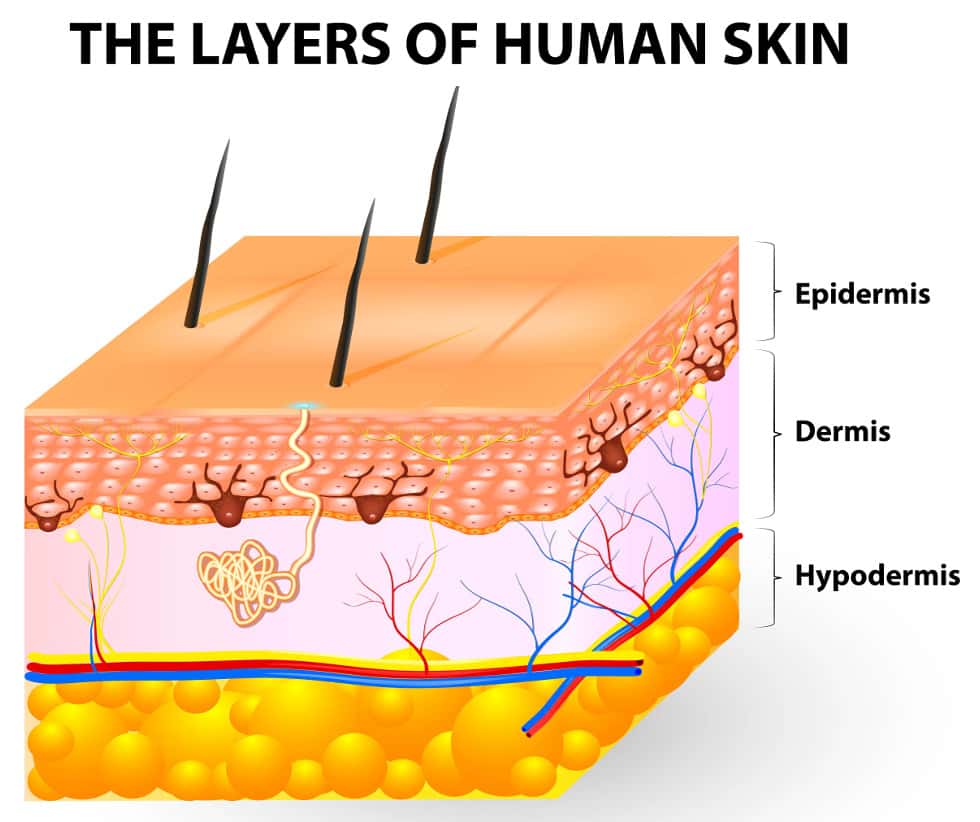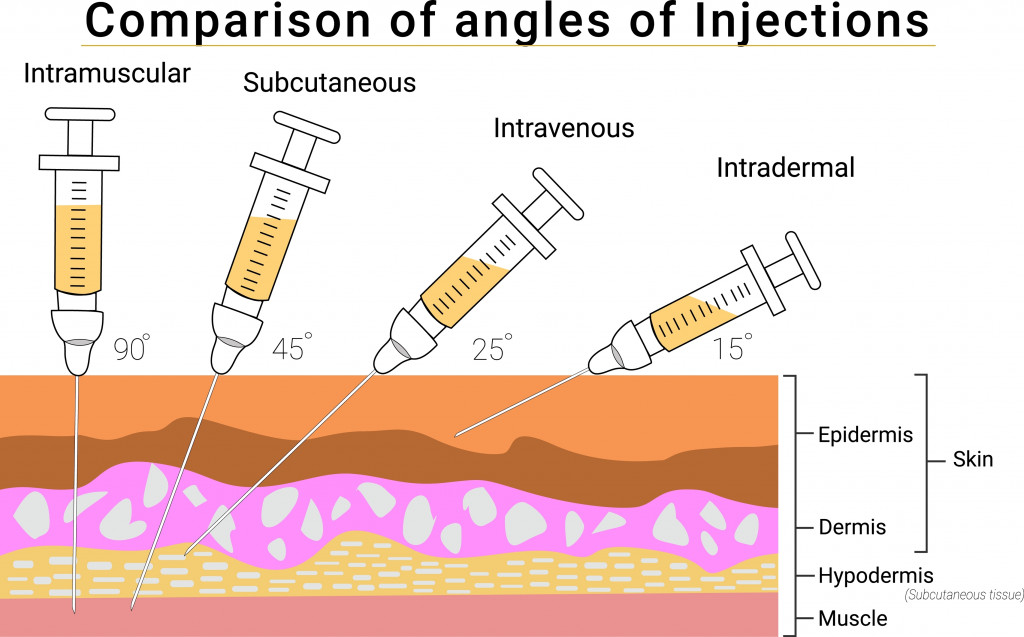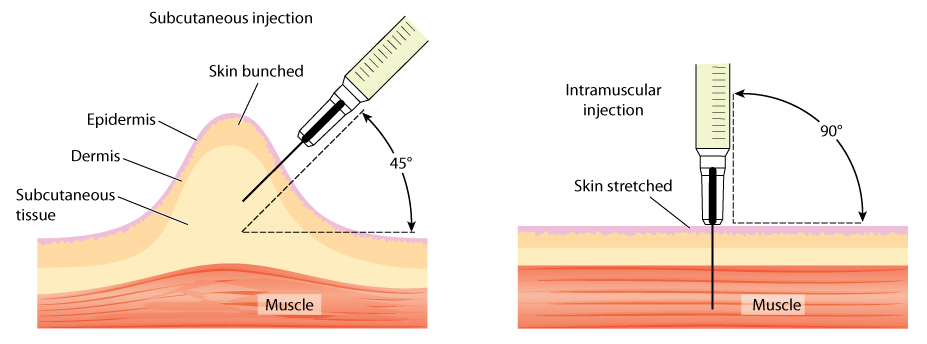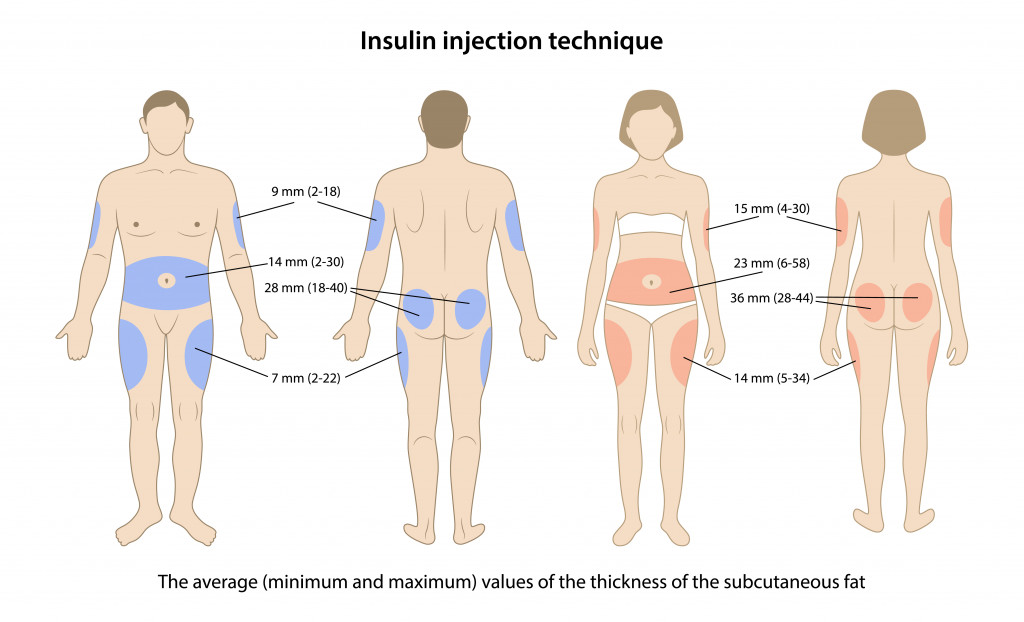Table of Contents (click to expand)
Injections are given in different locations depending on the type of substance or drug being administered, as well as the purpose of administration. Administering injections in the same location repeatedly can cause tissue scarring and other damage.
Don’t you just dread the annual visit to the doctor for your yearly flu shot? I’m sure my trypanophobic readers hate going for their injections. Sadly, many are necessary, whether it’s a vaccine, a vitamin shot, tetanus, or even a teeny tiny shot from an insulin pen.
You have probably noticed that not all injections are administered at the same spot. Some are given in the veins on the arm, some in the thighs, shoulders or bum. Why is that necessary? Why not just keep one dedicated body region for all the jabs?
The answer is that the region depends on the injection type.
What Are The Different Injection Types?
According to the administered region, there are four main injection types. They are,
Intravenous injections – injections administered in the vein, so the medicine quickly reaches the bloodstream.
Intramuscular injections – injections administered in the muscles.
Subcutaneous injections – injections in the innermost skin layer that contains fat and collagen (subcutaneous layer) are subcutaneous injections.

Intradermal injections – injections given in the 2nd or middle skin layer, otherwise known as the dermis.

There are other injections given in more difficult places, like the joints, bone marrow or in even scarier areas like our private parts or eyes. However, those types of injections are far less common.
The question coming to mind may be, “Why are there so many injection types in the first place?” The answer to that lies in the material being injected into the body.
Also Read: How Do Nurses Make Sure That The Needle Enters The Vein Properly?
How Are The Types Decided?
Depending on how the body absorbs the medicine or supplement, the administration region will be different.
Intravenous or IV injections are given directly into the bloodstream, so the medicine reaches the circulatory system within seconds. Such injections are issued when the medicine is required to reach the body’s system rapidly. Antibiotics and anti-fungal agents are administered in this way. The famous painkiller—morphine—is also injected directly into the veins. However, such injections are risky, because if they aren’t administered carefully; the veins may become damaged and swelling or blood loss can occur.
Let’s take a more famous example of intramuscular injections—the COVID-19 vaccines. We take these in the arm, around the shoulder, and more specifically in the deltoid muscle. That’s because the COVID-19 vaccine, along with many other vaccines, are given in the muscle. Blood is constantly flowing through muscles and the blood flow helps with the vaccine particle dispersal through the body.
Intramuscular injections are inserted into the muscle fascia. Due to the strong blood supply, larger medicine volumes may be given. Muscle injections reach the body’s circulation system in a steady manner, without shocking the body. Muscles are also less sensitive to harsh medicines, unlike subcutaneous tissues.
Other well-known examples of intramuscular injections are vitamin B and D injections. Other sites of intramuscular injections are the hips, butt and thighs. The muscle chosen for the injection depends on the medicine volume. The butt and thighs are better suited than the arm for greater volumes.
Subcutaneous injections are well known to diabetics. They use them to deliver insulin every day. Such injections don’t require long needles, as it only needs to penetrate the fatty tissues in the inner skin layer. These injections are conveniently used to deliver small amounts (a couple of drops) of hormones into the body and the process is fairly risk-free. Diabetics commonly insert insulin pens into their waist while pinching the skin to separate the fatty tissue from the muscle.

Subcutaneous tissues aren’t rich in blood vessels, so this administration allows a slow and steady release of the hormone molecules into the body’s system. This allows for a gradual insulin release into the bloodstream.

Lastly, we come to intradermal injections, which are barely inserted in the body. Such injections aren’t used to deliver medicines or supplements. The needle is less than an inch long and it hardly penetrates the body. You’ll most likely come across this type if you’re doing a tuberculosis test.
These injections have the longest absorption time and are basically carried out to see if our body will react negatively to an allergen or the tuberculin protein. As the injected material isn’t administered deep into the body, it’s easy to see the body’s reaction. A rash or a red patch will appear around the injection site if the body reacts strongly to the allergen. Intradermal injections are mainly administered on the inner surface of the forearm.
Now you know why it’s essential to give the right injection at the right place; otherwise, it can be dangerous. However, it’s also not good to use the same spot repeatedly.
Also Read: Why Do Tattoos Last Forever If Skin Constantly Sheds?
Why Can’t Injections Be Given In The Same Spot?
Too many injections at the same spot can cause tissue scarring and damage. Too many intramuscular injections can cause fibrous myopathy, a condition when the muscle fibers are damaged from needle piercings, which leads to muscle weakness.
Too many subcutaneous injections in the same region cause ugly skin clumps to form. This condition is called lipohypertrophy. Diabetics requiring daily insulin injections are at high risk of developing such fatty tissue clumps around the injection sites. These clumps also slow down the insulin release into the bloodstream, making it less effective.
In other words, it’s important to keep switching up the injection sites.
Conclusion
Very few people are brave enough to face the almighty needle year after year. It’s best to go to a trained professional to get your injections, especially if they are in the veins or muscles. However, sometimes you may be in a position where you have to give them yourself, although now it should be clear why you can’t just give an injection at any place you feel. That said, this article should not be taken as a guide on how and where to take injections.
Remember the basic practices for safety, where you wash your hands, wipe the injection site with rubbing alcohol and continue rotating the sites. The main rule to remember is to always use a NEW and sterile needle!
How well do you understand the article above!

References (click to expand)
- Clinical Procedures for Safer Patient Care – Open Textbook. opentextbc.ca
- Zuckerman, J. N. (2000, November 18). The importance of injecting vaccines into muscle. Bmj. BMJ.
- Ng, J. Y. (2021, February 15). Inadvertent subcutaneous injection of COVID-19 vaccine. Postgraduate Medical Journal. Oxford University Press (OUP).
